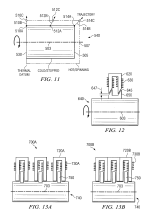InterestedinEVs
1 kW
- Joined
- Sep 21, 2010
- Messages
- 309
I was recently sent a white paper on a design for a new SRM that is coming to market and am hoping to get your thoughts about the magnetic design. They are claiming specific torques far higher than any other motor currently available. I don't know enough about motor design to know if this is reasonable or not. What are y'all's thoughts?




US7663283B2 - Electric machine having a high-torque switched reluctance motor - Google Patents
According to one embodiment of the present invention, an electric machine comprises a stator and a rotor. The stator has at least one stator pole with a first leg and a second leg. The rotor has at least one rotor pole. The rotor rotates relate to the stator. The at least one rotor is configured...
www.google.com
Last edited:

